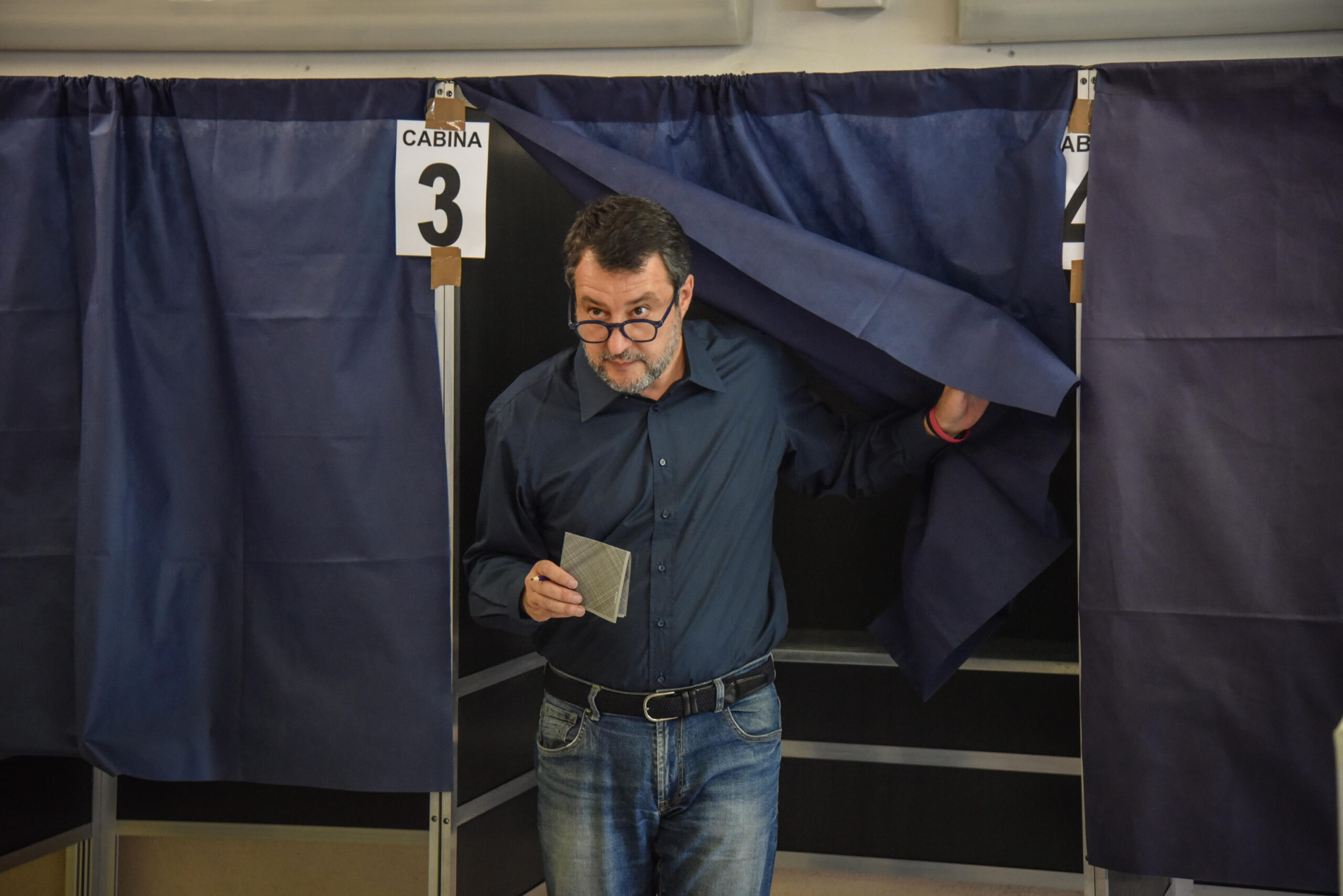Hoax or reality? A Facebook page posts an incredible image of a man finishing a hyper-realistic sand sculpture of Jesus Christ. In the comment, the page administrator complains that no one appreciates his works. The man depicted resembles other similar images, published on other pages and with similar messages that try to attract the attention and appreciation of users. In this article we explain why this is a banal deception.
For those in a hurry
- Many images are shared by different Facebook pages with similar messages.
- The sculptures are too surreal to be made with sand and it is unclear why the artist uses brushes and colors.
- These are images generated with Artificial Intelligence and present the generative errors typical of this technology.
- The images come from English-language Facebook pages that post AI-generated images.
Analyzes
Here is an example of an image shared by the Facebook page “Offerteonline” where the administrator writes “No one likes my artwork”.
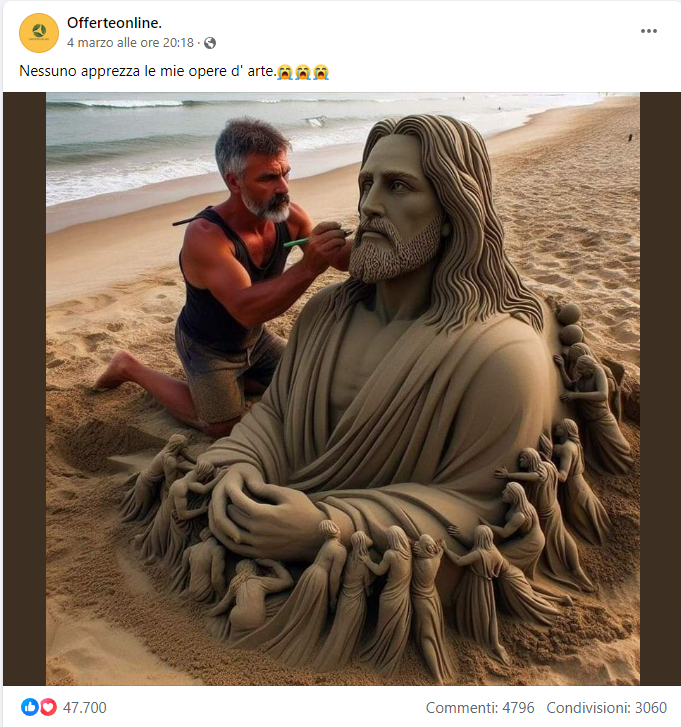
The “Anacleto” Facebook page also publishes another, where the administrator claims to be the author of the sculpture: “Made with my hands! Thanks to everyone who appreciates this. » In the picture below there is a strange cup with paint and brushes.
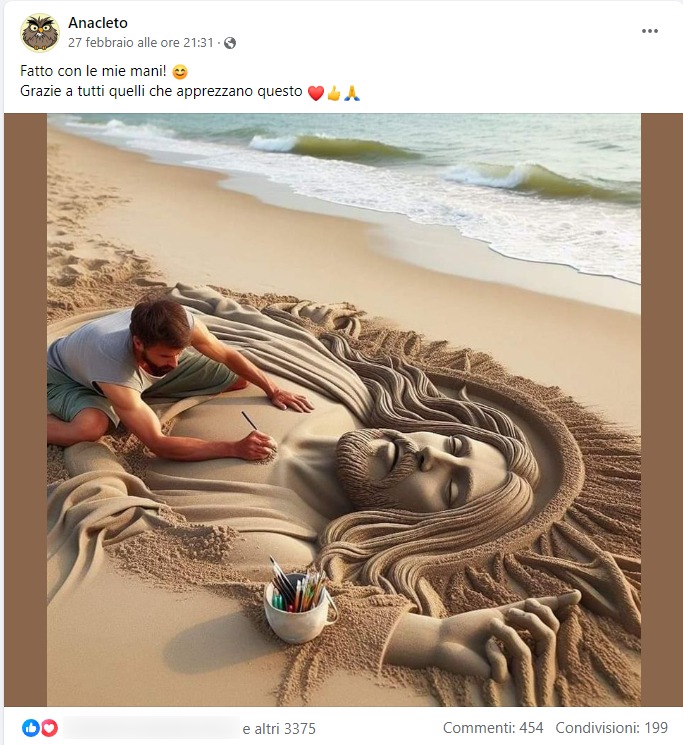
The “Anacleto” page repeats the operation with another photo bearing the same text (with the addition of an “Amen”).
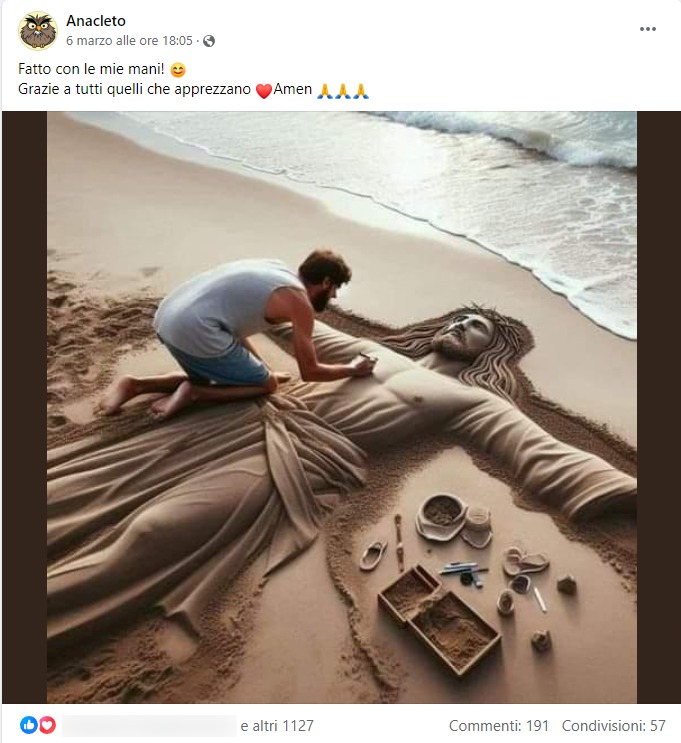
This last photo is also published (with identical text) on the “GiteMania” page shortly after the “Anacleto” page:
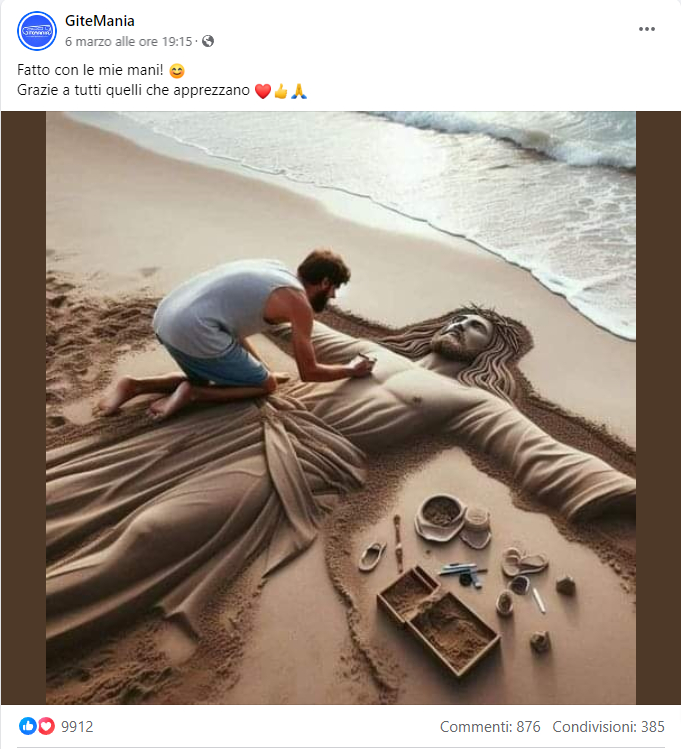
Still searching for the keywords “Made with my hands”, we find a post on the Facebook page “Beauty Milano” where a gigantic and impossible sculpture of Jesus Christ lying in the sand is published which occupies an entire beach.
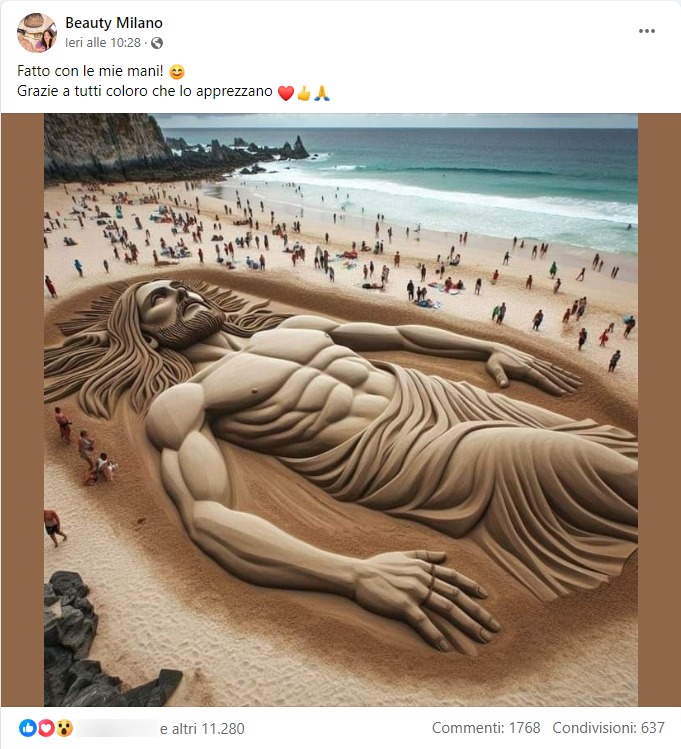
The mistakes of artificial intelligence
In the first image, the index finger of the elusive artist's right hand is extremely large and completely unnatural, a typical error of artificial intelligence. Additionally, the tip of the tool in his hand seems to merge with the nail of his middle finger.
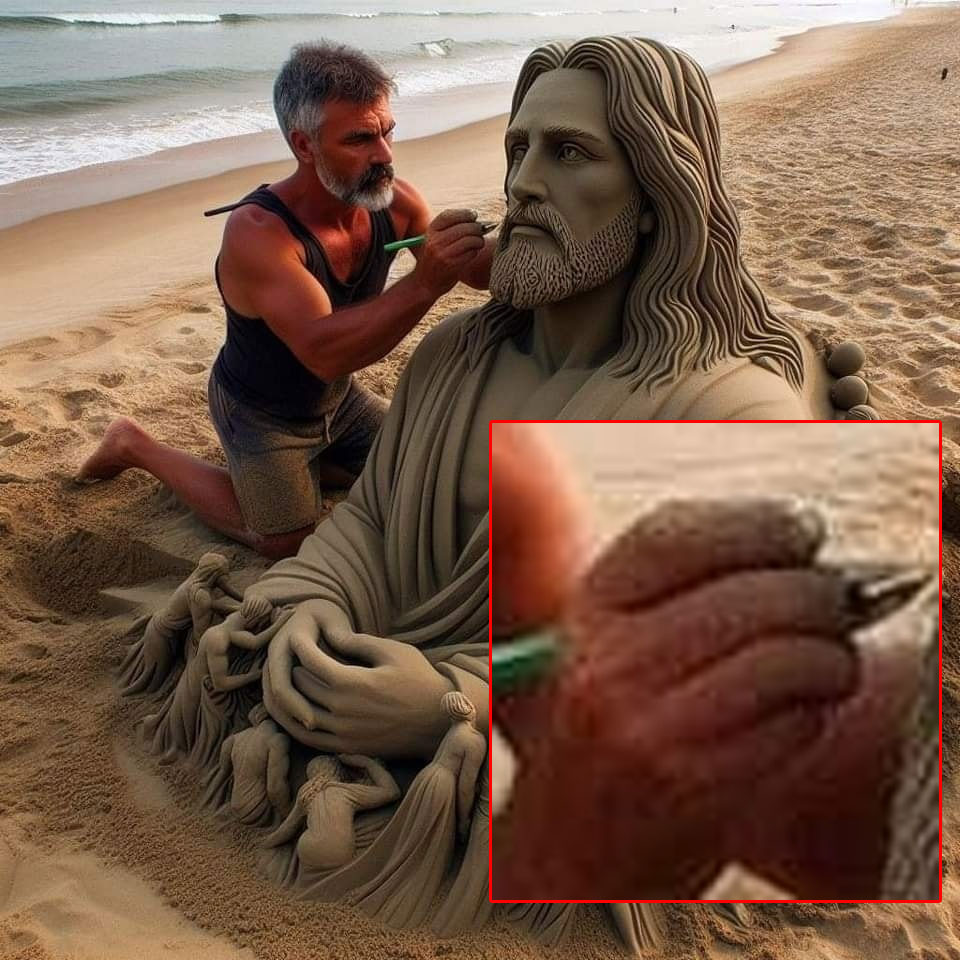
In the second image, the one shared by the “Anacleto” page, there are many typical errors: the alleged artist's right hand is distorted, his legs are in an unnatural position for the human body, the thumb of the statue of Jesus is extremely long and the cup is deformed.
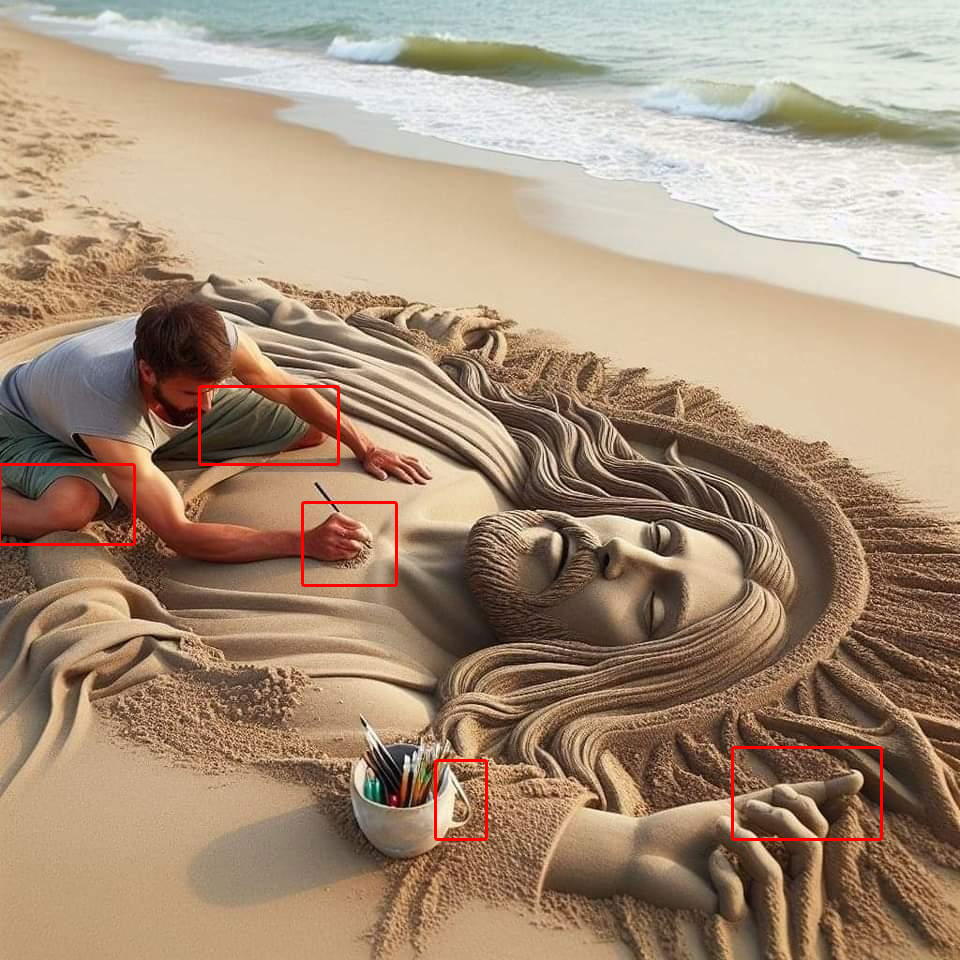
“Old” images published by other foreign pages
The third image, shared by the “Anacleto” page on March 6, 2024 claiming to be the author, was published on several pages on February 2, 2024 (also here). In a post from February 7, 2024 we find a similar text in French: “I made it with my own hands! Thank you to everyone who received this.
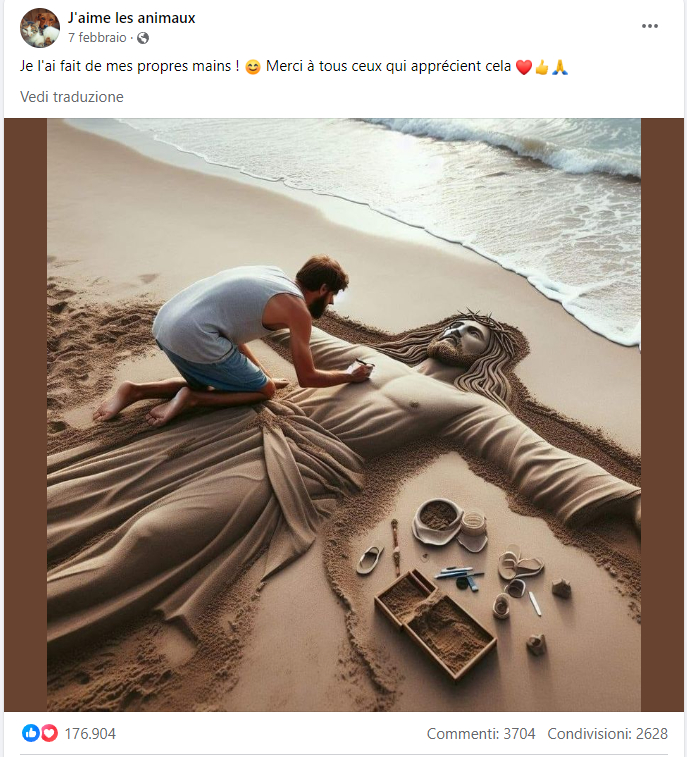
Compared to the one published by the Italian pages, the one shared by the French has a better resolution which allows us to see the error of Artificial Intelligence in the generation of the alleged artist's toes.
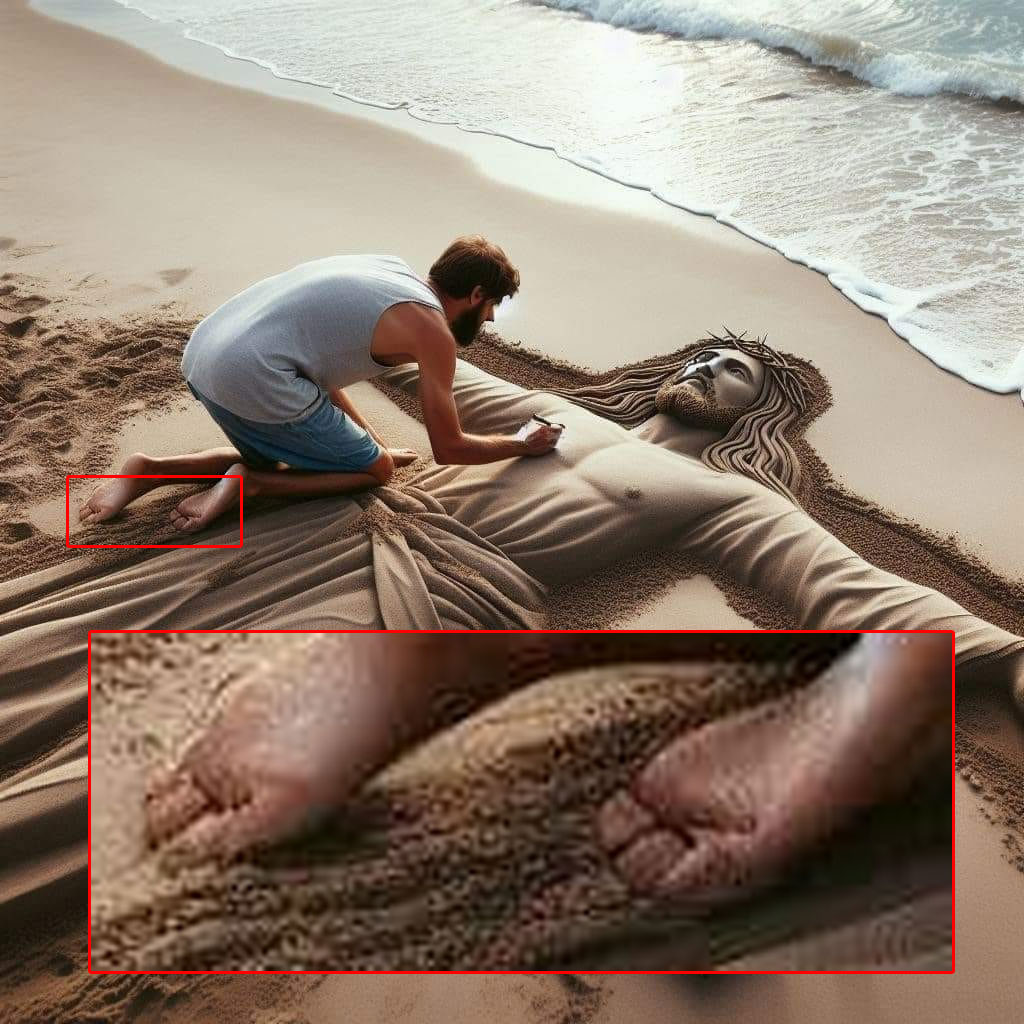
We find other similar images and with the same messages, where the administrators of foreign Facebook pages make users understand that they are the artists who created the sculptures: “I made it with my own hands! Thanks to everyone who appreciates this.”
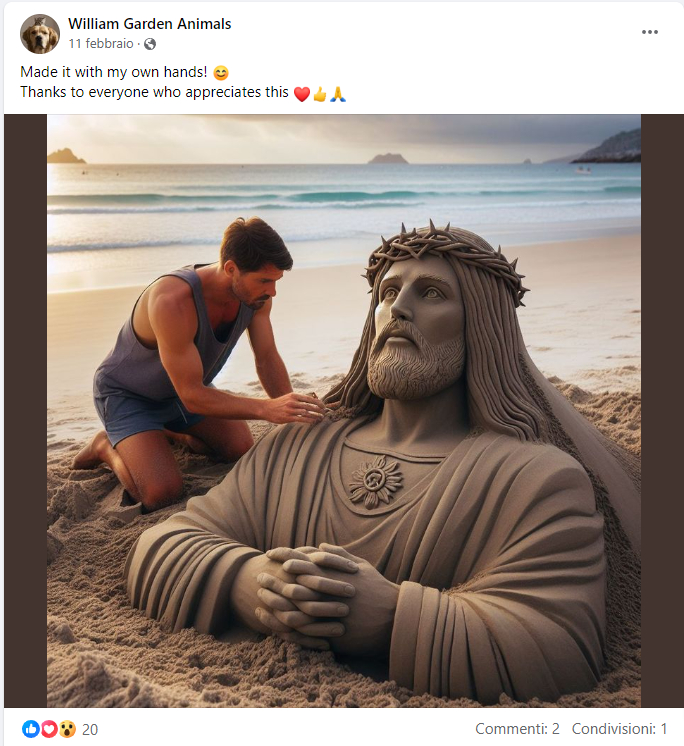
Also in this image we find the error of Artificial Intelligence in the generation of the hands: those of the alleged artist have long and twisted fingers, while the sculpture shows a Jesus Christ with more than 10 fingers.
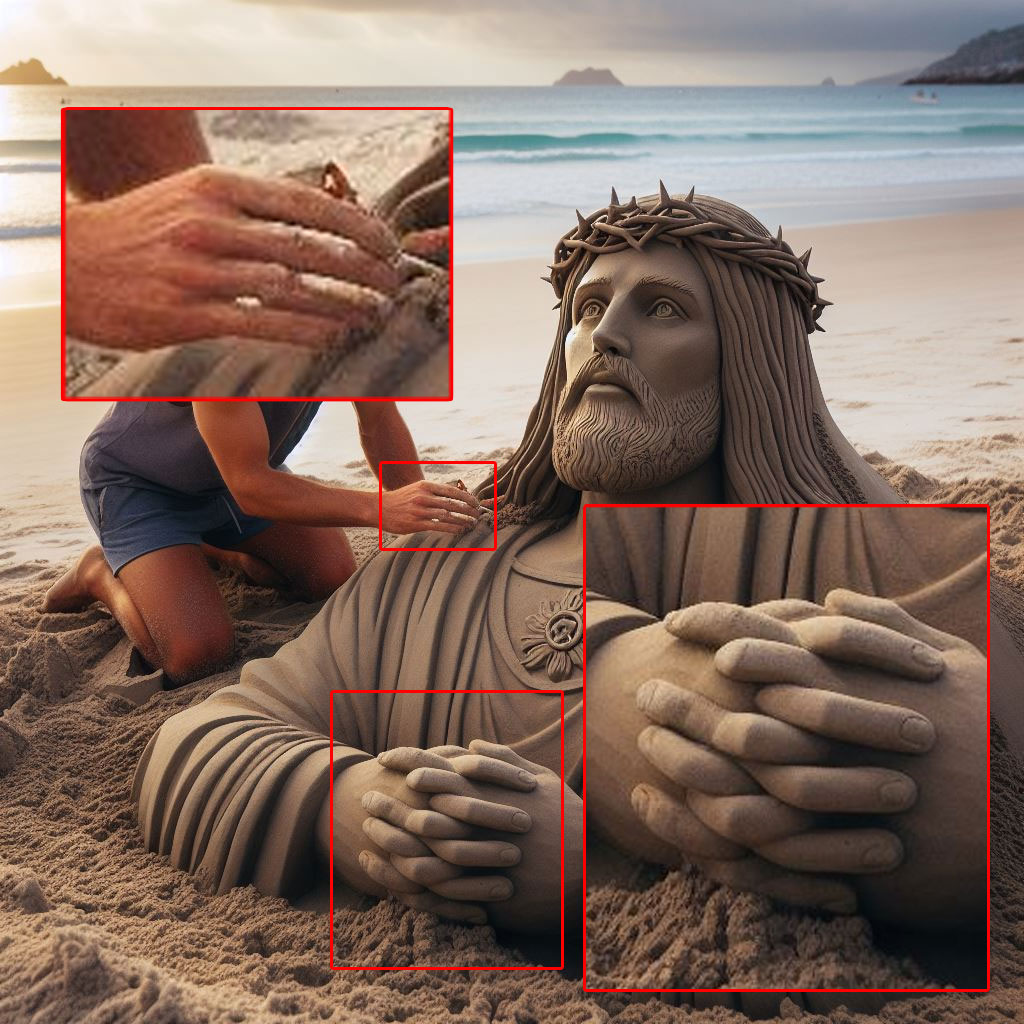
Why they spread and how to protect yourself from deception
In the Fact-checking section of Open, we have covered several similar cases where certain images are distributed in an attempt to exploit people's sensibilities and emotions. There are cases where pages and users unknowingly share these images, while in the case in question we see an attempt to mislead users to get useful reactions, comments and shares for the pages. A deceptive practice which in this case could be described as “innocent”, but the same methods could be used to spread dangerous messages or scams.
On the contrary, the aim of our section is to make users understand how they can be misled and how they can defend themselves. Here are some articles you can consult to train your mind to recognize these fakes:
Conclusions
There are many images circulating depicting incredible and surreal sculptures of Jesus Christ on the sand. The administrators of the pages that share them specify that these are the artists represented with the work of art, but they are all images generated by Artificial Intelligence. In addition to being shared in different languages with the same slogans, the images report typical AI errors.
This article contributes to a Facebook Project to combat fake news and misinformation on its social platforms. Laws here for more information about our partnership with Facebook.
